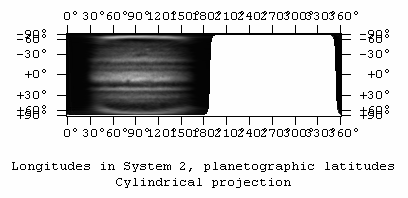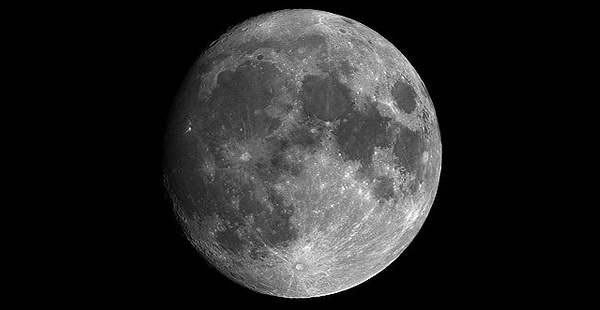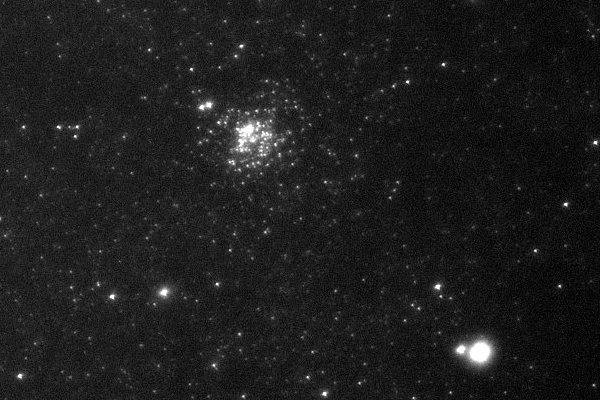Home >
Spazio fuori dal tempo
Spots
Moon
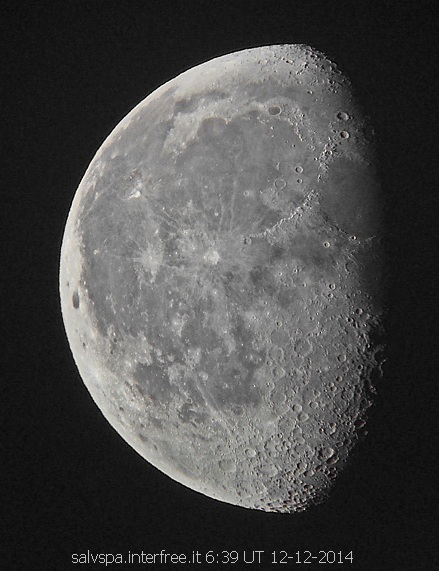
Spots
Two spots again, one month later
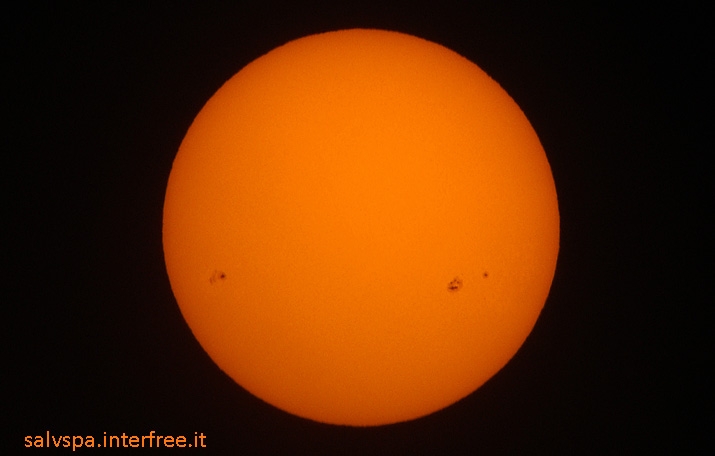
The better the collimation, the crisper the image. Handheld, as usual. 22-11-2014 12:44 UT. Both are visible by naked eye, a safe sun filter protection is compulsory.
Moon 02-11-2014 19:02 UT
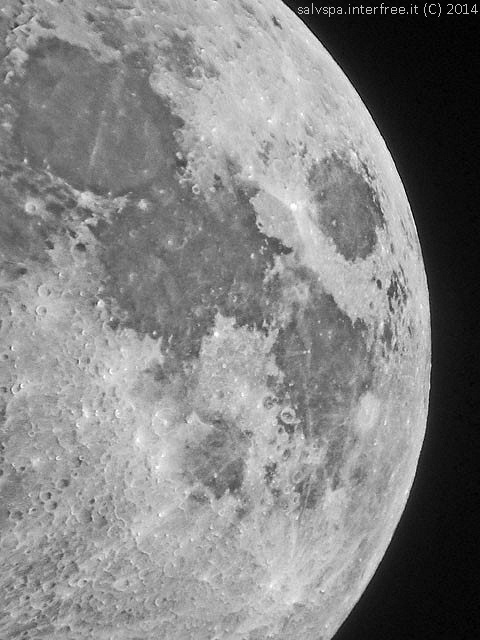
Clavius and Tycho regio 02-11-2014 18:57 UT
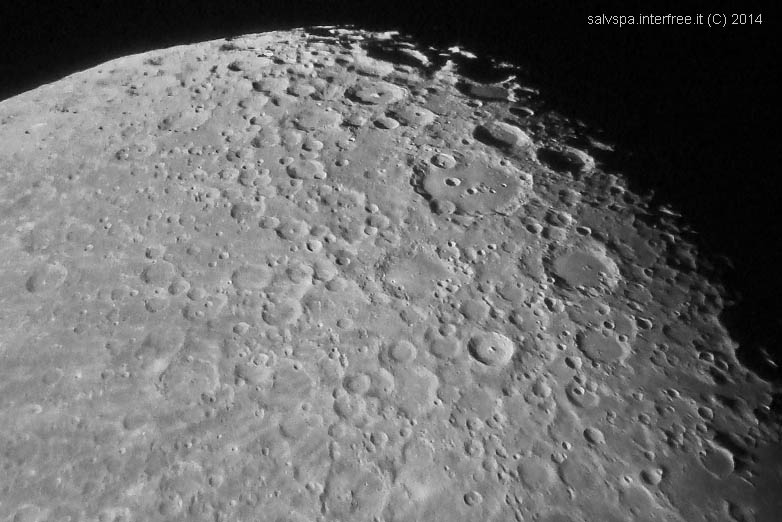
Copernicus 02-11-2014 19:53 UT
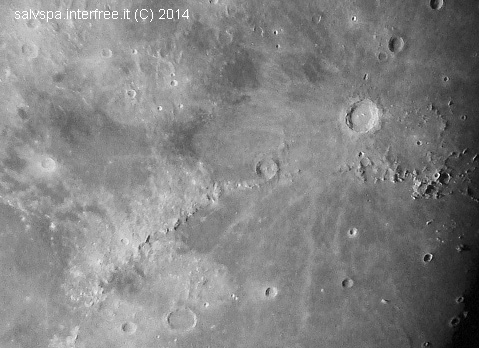
Moon 02-11-2014 18:35 UT
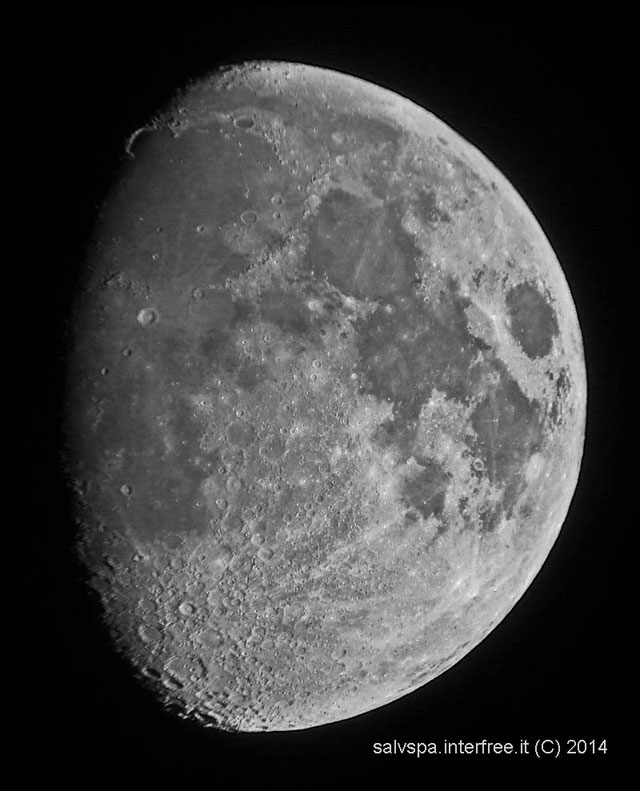
Moon 1-11-2014 18:35 UT
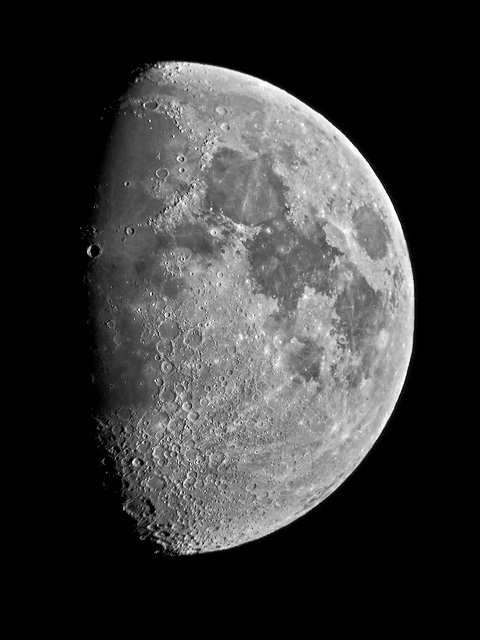
Moon 11114 18:35 UT
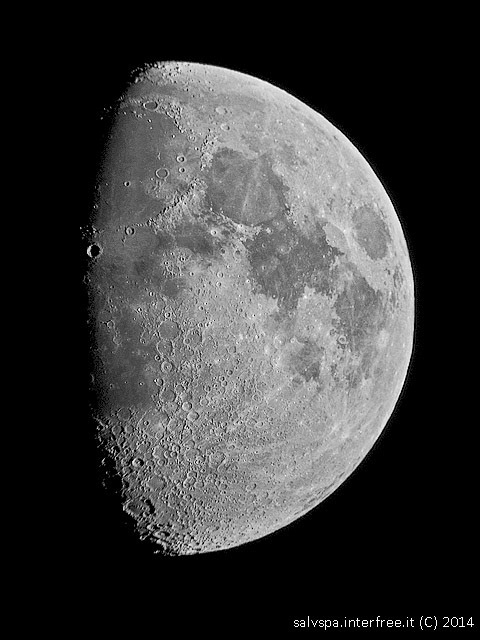
Moon 31-10-2014 19:46 UT
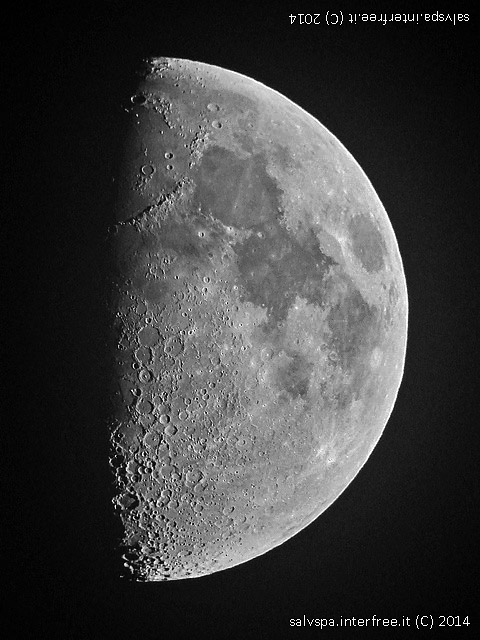
Moon 30-10-2014 18:05 UT
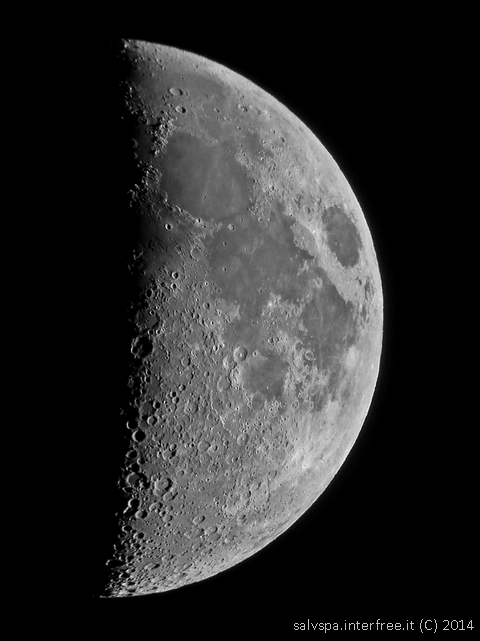
Moon 29-10-2014 17:53 UT
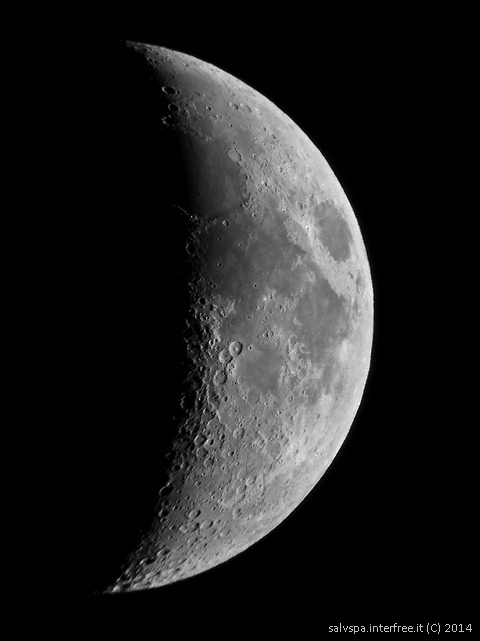
AR2192 24-10-2014 14.34 UT
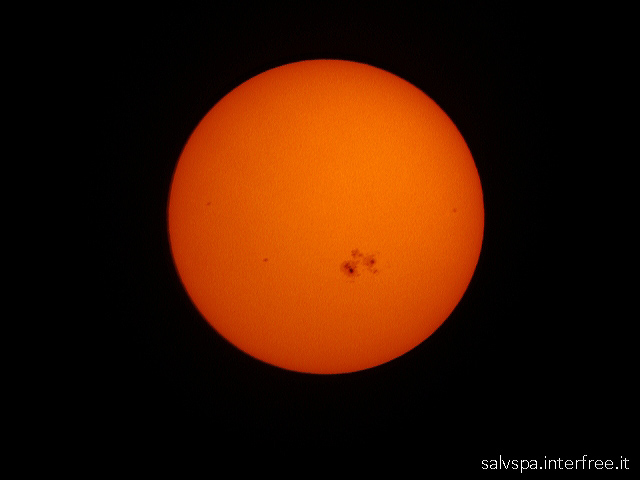
AR2192 22-10-2014 12.30 UT
.jpg)
A Large Sun Spot Appeared
Apollo-like shot
Posidonius (right, down), Montes Taurus, Macrobius.
Luna 12-10-2014 UT 2.15
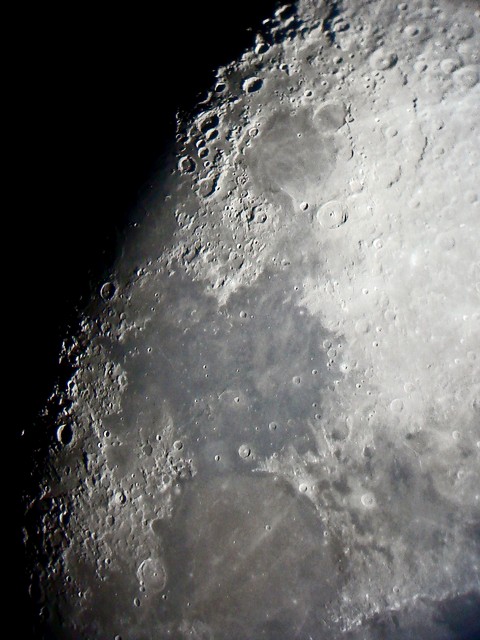
From to top to bottom: Mare Nectaris, part of Mare Fecunditatis, Mare Tranquillitatis, Mare Serenitatis. Near the terminator line, the bright spot inside Mare Fecunditatis is the inner half of Messier A exposed to the sunlight. The two parallel rays are hardly distinguishable. Notice the different colors of the basins in this shot.
Luna 12-10-2014 UT 2.21
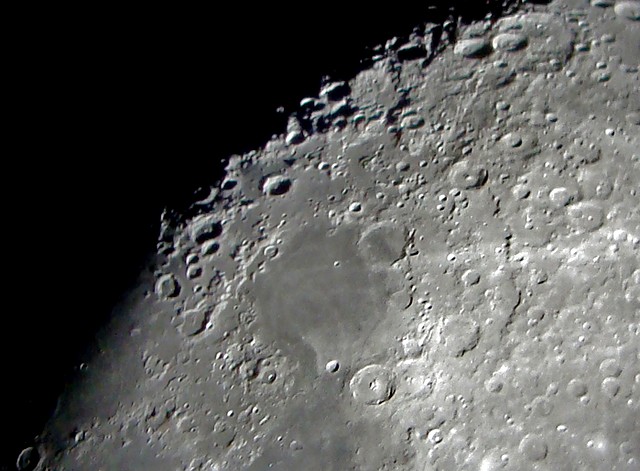
Con la fotocamera digitale sostenuta a mano è assai difficile ottenere immagini nitide su tutto il campo. D'altra parte, con questa tecnica è possibile dedicarsi più a lungo all'osservazione, salvando nella memoria digitale una veduta del campo inquadrato.
Mare Nectaris. Many craters, i.e. Theophilus, Cyrillus, Catharina, Piccolomini, are placed between the inner and the outer circle of this ancient basin.
A Solar Filter Anyone Can Build, 3
Four metal brackets secure the filter in front of the OTA aperture.
A Solar Filter Anyone Can Build, 2
The side of the filter frame facing the sun is conveniently painted white.
A Solar Filter Anyone Can Build
A special film, some screws, two thin panels and a drill are what you need to make a solar filter like mine.
The 124 mm by day, 2
Close to the telescope mount base, left, you can see the boxes of the three new eyepieces I bought. The Plössl 4 mm shows nicely rounded stars.
The 124 mm by day
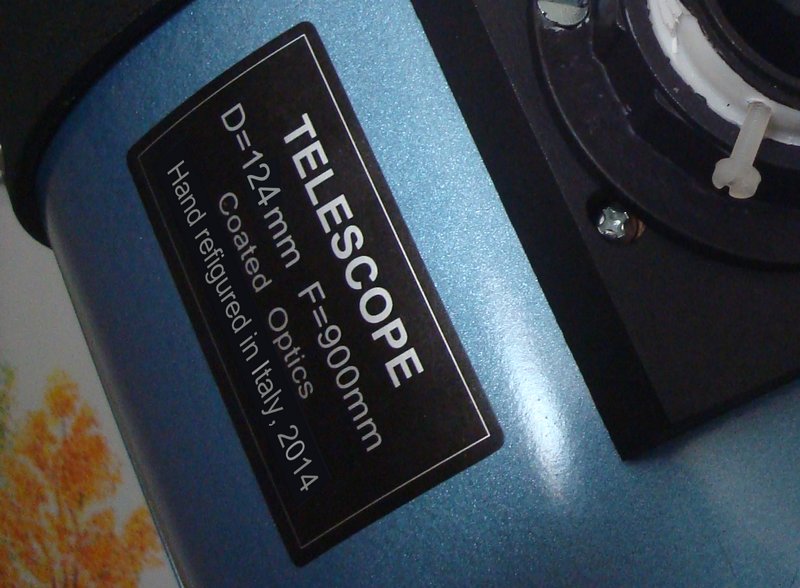
Maybe "Powered by me" is better.
A simple collimation tool
Why not? Despite its appearance, this sink trap allows to detect even the smallest misalignment.
124 mm v2.0
The new focuser is very practical. The sink trap can be a good collimation tool: when needed, it can be screwed into the focuser base after the eyepiece holder has been unscrewed. The toy-viewfinder represents the worst part of the telescope (version 2.1 to follow).
L'ultimo arrivato/The latest arrival
Un telescopio dobsoniano è l'ideale per chi intende trascorrere la maggior parte del proprio tempo nell'osservazione visuale. Il 124 mm f/7.2 è pratico e leggero, offre immagini molto nitide e contrastate grazie all'ottica lavorata con accuratezza. Per un astronomo non professionista è molto importante poter disporre, tra gli altri, anche di uno strumento facile da stazionare, per non negarsi mai le preziose occasioni che il cielo concederà.
My 124 mm dobsonian comes at the end of my inverse aperture fever. I had never experienced figuring commercial mirror before this late summer 2014. The optical tube assembly was a low priced second hand stuff found surfing the web, and maintains some factory defects still. Nevertheless, I improved the optical performance to maximum extent by refiguring the primary mirror and flash polishing the back of the secondary mirror. Then I added 100 mm to the tube (the old owner had just cut 30 mm in order to get the direct focal plane inside a camera - I wouldn't subscribe to this point of view), so that the optical cone reaches the diagonal mirror trimming out the edge). In the original project, central obstruction, mainly due to an oversized spider core, was about 0.36. My friend G. Ariot machined the core reducing the obstruction to 0.31. Lacking a focuser, I sauvaged a plastic drain sink I had bought for 3€. Another friend, W. Gottin, gave me an aluminium tube that revealed to be perfect for fitting 31.8 mm eyepieces, once glued inside the threaded part of the drain sink. I used the trap of the drain sink to achieve a good collimation, screwed in place of the eyepiece holder.
Luci e ombre
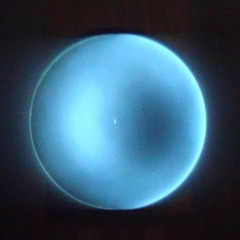
Immagine di Foucault. Specchio parabolico con bordo leggermente ribattuto e transizione accentuata all'interno del 70% del raggio. Zone concentriche prodotte da vari tentativi di correzione.
Bande
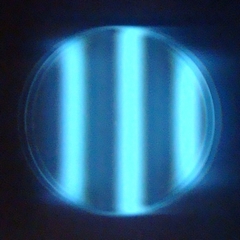
Test di Ronchi in extrafocale (frequenza reticolo: 5 linee/mm). Lo specchio è quasi sferico, ma il bordo è sensibilmente ribattuto nei cinque millimetri esterni.
My Ancient Jupiter
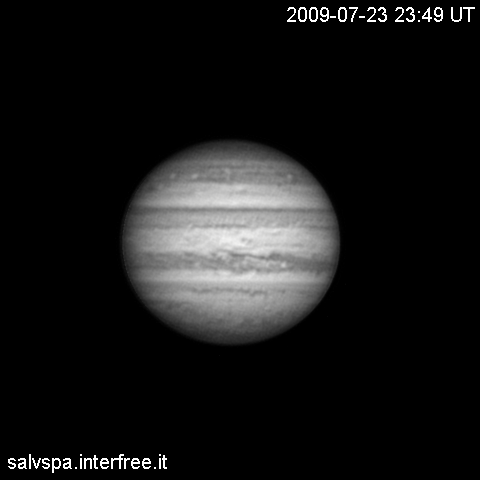
This shot was the very first planetary light of my DMK21AF04. I was obstinate indeed in capturing at 6 fps only. Later, IEEE1394 became obsolete within few years and literally disappeared. Home brewed newtonian optics here, hand made primary mirror D=178 mm f/5.5, custom ceramic glass diagonal manufactored by Zen, home assembled 15 mm Plossl from a russian spotting scope.
My Ancient Jupiter, II
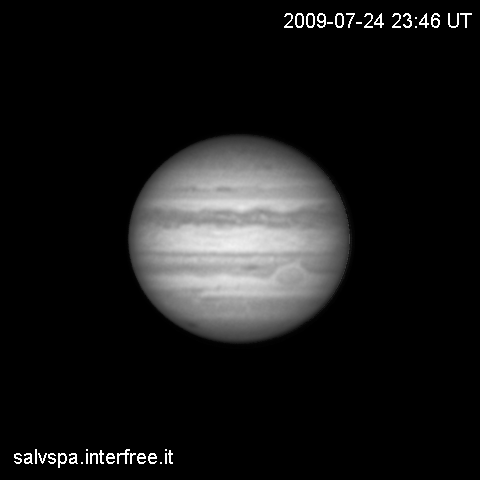
One Year, One Step More

This is an intermediate processing step. I believe it is somewhat closer to reality. A smooth processing got rid of a tedious fixed pattern noise built in the SPC900. Indeed, I much prefer my older PCVC740K, which is not a zero-defect-machine, anyway. I hope to get much better result next month. Stay tuned, please.
Many Spots UT 12:10 11-12-2014
Giove nella banda del metano
